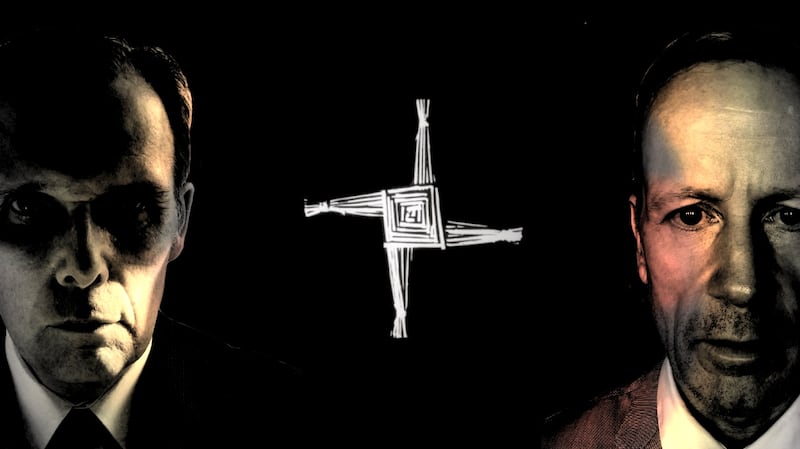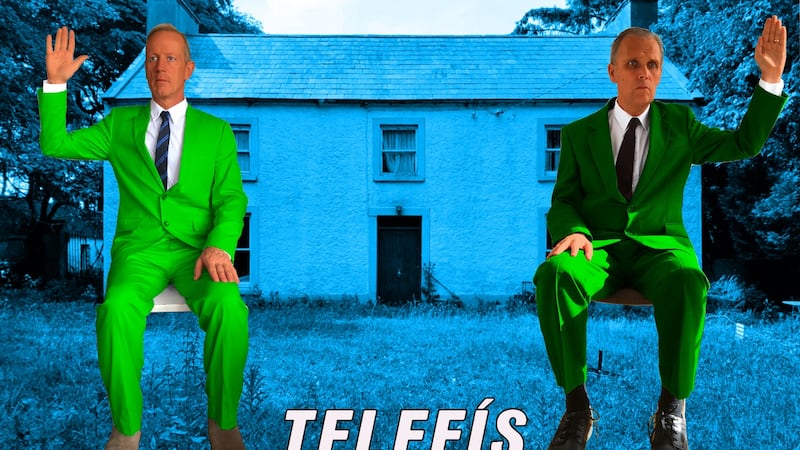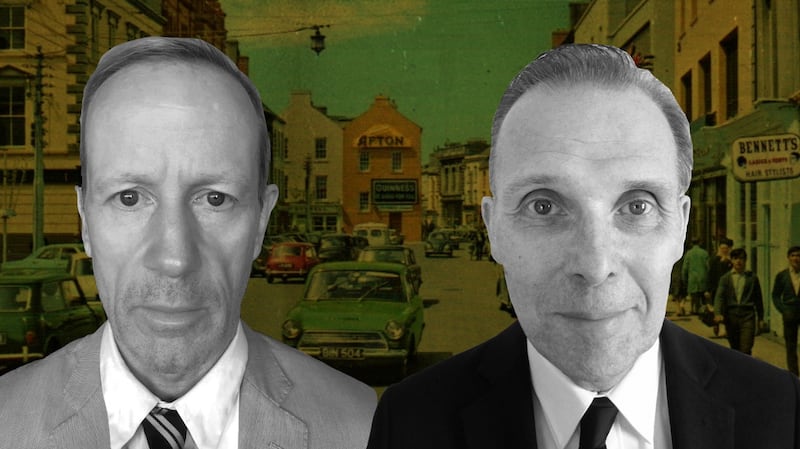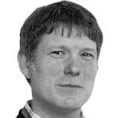Growing up in Cork in the 1960s, Cathal Coughlan avidly watched RTÉ's nascent television service, like so many other Irish children. Though the station broadcast in black and white, and was constrained by budgets, Coughlan was fascinated by its output for younger viewers, from impressionistic Eastern Bloc cartoons to Irish-made productions of puppeteer Eugene Lambert.
But in retrospect, his reactions to these programmes were probably not the same as other kids’.
“Seeing the Lambert puppets on the telly at age three or four, that defines a whole lot of things for me – what it is to be scared, to be looking into the unknown, ideas of death. None which were deliberately put there by the Lamberts,” Coughlan recalls, with a laconic laugh. “But there’s no walking that back, it’s always just there.”
As an adult, Coughlan would go on to make some of the most original and acidly arresting Irish music of the last 40 years, starting with his band Microdisney. But when he started exchanging emails with producer and fellow Irish expatriate Garret “Jacknife” Lee in early 2020, those ominous childhood memories of rickety TV shows were resurrected.

Though their correspondence was initially social, Coughlan and Lee quickly developed a more creative dynamic as they bonded over music and, crucially, their shared childhood viewing habits. “It was just a Venn Diagram where we met,” says Lee. “These were very formative cultural things to get exposure to at any early age. So a lot of our music and sounds are, I think, almost like dropped balls of the period.”
Nearly two years on, those common cultural references have found expression in the duo’s collaborative project Telefís, with their first album, A hAon, released next month. It’s an outstanding set that draws equally on Coughlan’s formidable songwriting gifts and Lee’s experience as heavyweight producer of best-selling albums by the likes of Snow Patrol, REM, Weezer and U2.
'We've kind of established a common ground thematically, around the imagery of the mid-20th century Irish Republic, and some of its cultural oddities'
Dense, acerbically observed lyrics are delivered in Coughlan's distinctive baritone over Lee's backdrops, from sparsely atmospheric synths to bass-driven electro-funk. Equally striking, however, is the forebodingly retro television motif that runs throughout, from fictional station call signs to an ersatz Angelus. Similarly, the band's visuals evoke the early days of RTÉ, right down to using the St Brigid's Cross as a logo. But the duo stress there's more to the concept than mere absurdist nostalgia.
‘Cultural oddities’
“We’ve kind of established a common ground thematically, around the imagery of the mid-20th century Irish Republic, and some of its cultural oddities,” Coughlan says. “It serves as an existential jumping-off point, if you like. It’s almost like a fantasy world or a museum. But it’s a museum which has real-world stuff in it.”
Accordingly, the songs range over all manner of concerns, from human-scaled reflections on geopolitics (Falun Gong Dancer) to unexpectedly wistful ruminations on cross-dressing light entertainers of yore (The Symphonies of Danny La Rue).
That the record got made at all is a small triumph. Not only were the pair working at the height of lockdown, but they were separated by six thousand miles
“There’s deadly seriousness along with flippancy, all at the same time,” Lee observes. “That’s the tightrope we’re trying to walk, looking at where we are now from where we’ve come from, musically and everything else.” It makes for an album rooted in social, personal and musical history – Kraftwerk loom large throughout – without being stuck in the past, all pulling the listener into its skewed universe.

That the record got made at all is a small triumph. Not only were the pair working at the height of lockdown, but they were separated by six thousand miles: Coughlan lives in the midlands of England, while Lee is based in the canyons of Los Angeles.
Rather than hampering productivity, however, the circumstances aided recording. “We were both at home, and distance didn’t seem to matter,” says Lee. “We both worked on our time, so we were out of each other’s way.”
Coughlan concurs: “We’ve pretty well defined rules when it comes to the musical side of things. Nobody has to shoulder the whole thing,” he says. “I’ve been a one-man operation of writing and producing for a long time, and this is just completely unlike that. I find it very liberating to just focus on certain aspects.”
The collaborators’ slightly divergent views of the process speak of their differing paths. Starting in the early 1980s, Coughlan found critical acclaim and cult status as frontman of Microdisney and, later, Fatima Mansions. But his coruscating compositions, frequently aimed at the tragicomic nature of Irish life, never translated into sales.
‘Fitful relationship’
“I’ve had a bit of a fitful relationship with music,” he says. “I originally got into it seriously because I fell off education, and luckily I met [Microdisney co-founder] Sean O’Hagan, and together we encountered a bunch of people in Cork who were way more free-spirited than either of us.
“So we just fell into that, and music became a way of life for a time. But obviously I’ve had a pretty chequered relationship with commercial success, so I’ve been in and out of doing other things for a living.”
Following various record-label disputes – “a Faustian bargain that people used to have to make” – Coughlan spent the past 20 years on a series of idiosyncratic solo projects, most recently last year’s compelling album, Song of Co-Aklan. “I was fortunate to be able to indulge some pretty impractical ideas about how I could make music, because I wasn’t looking to it for my rent.”

Though Lee also started out as a musician, with 1980s Dublin indie band Thee Amazing Colossal Men and later with Compulsion, his studio skills saw him become an in-demand producer. But even when working on big-budget albums for superstar rock acts, Lee felt disenchanted, as he had from early on.
“As an 18-year-old, all joy for music started to disappear because I was so embroiled in mechanisms of the industry, and I didn’t regain that love for it until recently,” Lee says. “I wasn’t feeling much joy or fulfilment from work, and then about four or five years ago, I changed my attitude.
“I reminded myself why I was doing it and, without sounding too trite, how lucky I was to do it all day. And that slight alteration encouraged me to do different work. My life got better, and the music got better.”
Lee remains busy as ever, working on records with artists ranging from ex-REM guitarist Peter Buck and former Auteurs singer Luke Haines (who put him back in touch with Coughlan) to American outsider artist Lonnie Holley and Malian singer Rokia Koné. He has also started making his own music again, self-releasing last year's inventive album The Jacknife Lee, featuring guest rappers and singers.
Despite mishaps such as shipments of vinyl getting lost in transit, Lee was revitalised by the experience: “I’ve made records that sold millions, and I would be so excited if I sold a seven-inch single to a shop in New Zealand.”
‘Totally ambivalent’
Hence the appeal of Telefís. “I’m just working instinctively, rather than some cerebral thing, like in my normal job,” says Lee. So fruitful is their creative relationship that the duo have already recorded a second album, inevitably entitled A Dó. And while Coughlan continues to view forays into the music industry with a gimlet eye – “I’m still totally ambivalent” – he is more at ease with his legacy, describing the 2018 Microdisney reunion gigs as “life-affirming”. Moreover, he has a clearer sense of his vocation these days.
'It seems like a new country now, so when I go there it's like I'm from old Ireland and the new thing is so exciting'
“There’s no point in inventing material opportunities for yourself if you’ve ignored the underlying reason why you’re enthusiastic about doing it, and what it is you’re trying to put across,” Coughlan says. “That doesn’t mean you need a manifesto, or that it has to stand up in a psychoanalysis session, but it’s important that it connects to you on some deep level.”
All of which leads back to the shared preoccupations that prompted Coughlan and Lee to collaborate as Telefís. Both men left Ireland decades ago, but the country still shapes them. “I have an unusual connection to the place,” says Lee. “It seems like a new country now, so when I go there it’s like I’m from old Ireland and the new thing is so exciting.” Similarly, Coughlan has never shaken the influence of his Irish background, even if he wanted to. Telefís is just a new channel.
“It’s no exaggeration to say that Ireland is the lens through which I view everything,” Coughlan says. “Just because the place where you first see the light of day leaves its imprint on the way you see daylight for the rest of your days. It’s not like I left when I was really young: a lot of things were pretty well developed, including things that I’ve had to unpick since then. But place for me is very important. It just never really stops.”
A hAon is released on Dimple Discs on March 4th.




















